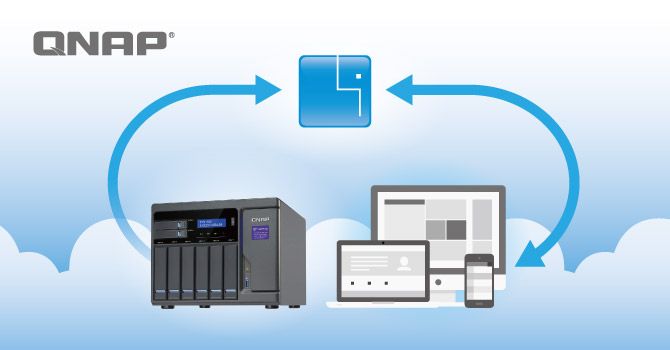How to Implement a Reliable Data Backup System for Your Small Business in 5 Simple Steps
In today's digital-first business environment, data is the lifeblood of your operations. From customer information to financial records, losing this critical data can be devastating—potentially costing small businesses thousands of dollars and, in some cases, forcing them to close their doors permanently. Yet surprisingly, many small businesses still operate without proper backup systems in place, putting themselves at unnecessary risk.

Small business data backup solutions are no longer optional—they're essential. The good news? Implementing a robust backup system doesn't require a massive IT department or technical expertise. This straightforward guide will walk you through five practical steps to protect your valuable business information efficiently and effectively.
Step 1: Assess Your Data Backup Needs
Before investing in any backup solution, you need to understand exactly what you're protecting and how quickly you need to recover it in case of an emergency.
Identifying Critical Business Data
Start by categorizing your data based on importance:
- Mission-critical data: Information that your business cannot function without (customer databases, financial records, operational documents)
- Important data: Information that would cause significant disruption if lost (email archives, project files)
- Non-essential data: Information that would be inconvenient but not devastating to lose
Take inventory of where this data currently lives—on individual computers, shared drives, cloud services, or physical documents that need digitization. This assessment will help you determine the appropriate scale and type of backup solution needed.
Determining Recovery Time Objectives
Ask yourself: "How quickly would I need to restore this data to avoid significant business impact?" This is your Recovery Time Objective (RTO).
For example:
- Customer management systems might need recovery within hours
- Accounting data might need recovery within a day
- Marketing materials might tolerate longer recovery periods
Understanding these requirements will guide your technology choices in the next step.
Step 2: Choose the Right Backup Solution
With your needs assessed, it's time to select the appropriate backup technology for your business.
Cloud vs. Local Backup Options
Cloud Backup Solutions:
- Advantages: Accessible from anywhere, automated, scalable, and protected from on-site disasters
- Considerations: Requires reliable internet connection, ongoing subscription costs, potential security concerns
Local Backup Solutions:
- Advantages: Fast recovery speeds, one-time purchase cost, complete control over your data
- Considerations: Vulnerable to on-site disasters (fire, flood, theft), requires manual maintenance
For local backup solutions, Network Attached Storage (NAS) devices like the QNAP TS-251D-4G provide an excellent entry point for small businesses, offering 2-bay storage with hot-swappable drives and a user-friendly interface.
Hybrid Solutions for Maximum Protection
The most reliable approach combines both cloud and local backup strategies:
- Local primary backup: Using a device like the QNAP TS-464-8G for fast, immediate backups and recoveries
- Cloud secondary backup: Automatically syncing critical data to secure cloud storage for disaster recovery
According to a Veeam Data Protection Report, organizations using hybrid backup approaches experience 30% fewer data loss incidents than those relying on a single backup method.
Step 3: Establish a Regular Backup Schedule
Consistency is crucial for effective data protection. Your backup system is only as good as its most recent backup.
Automated Backup Configuration
Set up automated backups based on how frequently your data changes:
- Real-time synchronization: For constantly changing critical data
- Daily backups: For regularly updated business documents
- Weekly backups: For relatively static information
Modern NAS systems like the QNAP TS-262 offer intuitive scheduling interfaces that make this process straightforward, even for non-technical users.
Verification Protocols
Don't just set and forget your backups:
- Configure your system to send confirmation emails after successful backups
- Set up alerts for backup failures or anomalies
- Implement logging to track backup history
For businesses with more extensive data needs, the QNAP TS-664-8G offers advanced monitoring capabilities with its 6-bay configuration and robust management software.
Step 4: Implement Security Measures
Your backup system contains all your business's critical data, making it a prime target for cybercriminals.
Encryption and Access Controls
Protect your backed-up data with:
- End-to-end encryption: Ensuring data is unreadable without proper authorization
- Strong password policies: Requiring complex passwords that change regularly
- Two-factor authentication: Adding an extra verification step beyond passwords
- Role-based access: Limiting who can access or modify backup configurations
Enterprise-grade NAS solutions like the QNAP TS-873A-8G include comprehensive security features designed specifically for business environments.
Physical Security Considerations
Don't forget about physical protection:
- Store local backup devices in secure, climate-controlled locations
- Consider fire-resistant storage options
- For critical operations, maintain backups in geographically separate locations
- Implement surveillance and access controls for server rooms
According to the Ponemon Institute, 60% of small businesses that experience major data loss close within six months, highlighting the importance of comprehensive security measures.
Step 5: Test and Maintain Your Backup System
A backup system you've never tested is a backup system you can't trust.
Regular Recovery Drills
Schedule quarterly recovery tests:
- Select random files to restore from your backups
- Simulate complete system recovery scenarios
- Document the process and time required
- Identify and address any bottlenecks or failures
For businesses with minimal IT support, the user-friendly QNAP TS-233 offers simplified testing procedures that non-technical staff can manage.
System Updates and Monitoring
Maintain your backup system's health:
- Apply firmware and software updates promptly
- Monitor drive health indicators to anticipate failures
- Replace aging storage media before it fails
- Review and adjust backup policies as your business grows
For larger operations, the QNAP TS-832PX-4G provides comprehensive health monitoring and management tools across its 8-bay configuration.
Protecting Your Business Future
Implementing a reliable data backup system isn't just about technology—it's about ensuring your business's survival and continuity. By following these five straightforward steps, you've created not just a safety net, but a competitive advantage. In a world where data breaches and system failures are increasingly common, businesses that can quickly recover maintain customer trust and operational stability.
Remember that your backup needs will evolve as your business grows. Schedule annual reviews of your backup strategy to ensure it continues to meet your changing requirements. With the right system in place, maintained regularly and tested thoroughly, you can focus on growing your business with confidence, knowing your valuable data is protected.
Don't wait for a disaster to discover the importance of proper backups—implement these steps today and secure your business's digital foundation for tomorrow.




